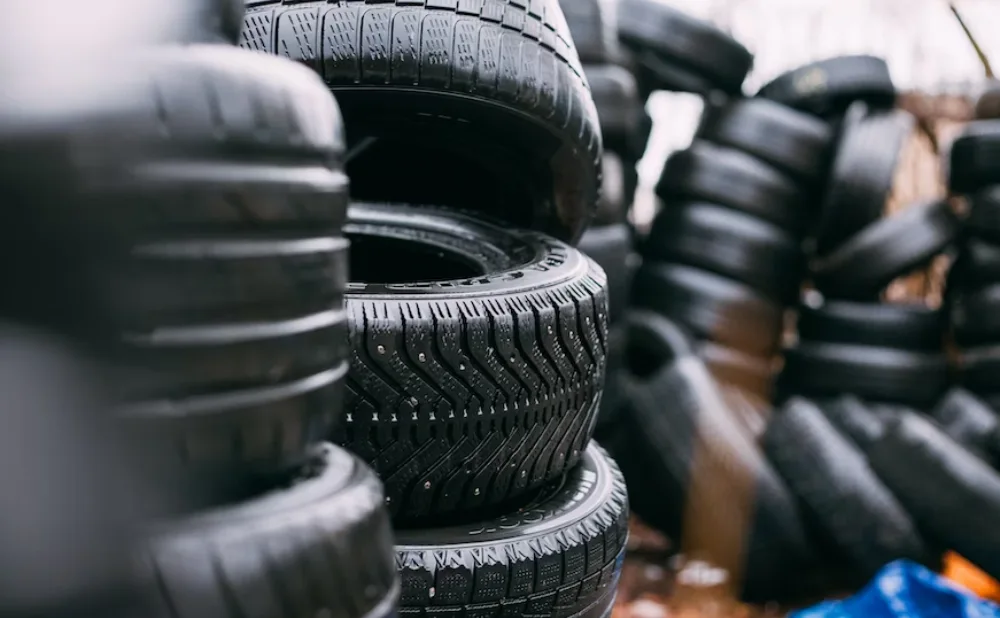The Crucial Role of Tire Pressure in Road Safety
By TOI Staff
June 13, 2023
Update on : June 13, 2023

Among the things you should prioritize in car maintenance is tire pressure. The correct inflation levels ensure that your tires are not over- or underinflated for an optimal driving experience. For these reasons, understanding tire pressure maintenance is necessary to avoid potentially dangerous outcomes.
If you’re a beginner driver still learning everything about your car, it’s time to learn about tire pressure. Read on to learn what tire pressure means, why correct levels matter, and how to do check-ups and maintenance for safe and comfortable trips.
Understanding Tire Pressure
Tire pressure is the amount of air pressure inside your tires. This compression helps support your vehicle’s weight, load capacity, and road movements. It is usually measured using the pounds per square inch (PSI) unit.
Standard tire pressure levels range between 30 and 42 PSI and vary depending on the vehicle size. Experts recommend that small vehicles have 30 PSI, 36 PSI for medium-sized cars, and 42 PSI for large ones. They may go as low as 20, but it is not ideal. Anything lower can be considered flat tires.
Why Proper Tire Pressure Matters
Correct tire inflation levels are vital for optimal vehicle support and performance. Besides these, here are other reasons why proper tire pressure matters:
Road safety
Roads are sometimes inevitably dangerous, and improper tire pressure can contribute to their potential hazards. Flat tires and blowouts can happen when you’re unable to maintain the correct inflation levels. Both situations can result in minor or fatal crashes, accidents, and injuries, affecting you, your loved ones, and other motorists and road users.
While flat tires and blowouts can cause tragedies, blowouts are often more dangerous because they are usually instant. Anyone in these situations may face unexpected accidents during a smooth-sailing ride.
Keeping your tires’ air pressure at standard levels is the key to avoiding these tragic events. That way, you can keep everyone, including you, safe on the road.
Tire longevity
Buying new tire sets can be costly. If you don’t want to purchase expensive tire replacements constantly, always maintain the proper tire pressure levels.
Proper inflation can ensure tire longevity. Your tires will not quickly wear out, and your investments can last for long-term use. You can also prevent inconsistent and costly single-tire replacements. This way, you can efficiently budget your regular car maintenance costs.
Fuel efficiency
Tire pressure can affect your fuel consumption. Underinflated tires may increase fuel consumption, increasing your vehicle’s drag and reducing fuel efficiency. To prevent this, maintain your tire pressure.
Correct tire pressure can promote fuel efficiency by increasing your gas mileage. Gas mileage is the miles your car can travel per gallon of fuel. With increased gas mileage, you can save on fuel costs, reduce carbon footprints and air pollution, and avoid oil dependence because you consume less fuel.
How To Check Tire Pressure
Now that you understand tire pressure and its significance for road safety and vehicle performance, it’s time to know how to conduct tire pressure check-ups. Here’s how to do them:
- Know your vehicle’s recommended inflation levels. You can read them on the sticker on your car’s side door jamb, glove box, or owner’s manual. Remember not to use the maximum pressure printed on your tire’s sidewall
- Get your manual or digital tire gauge once you know the recommended tire pressure
- Remove the air valve cap and put it in a nearby space. Expect to hear the air hissing
- Press the gauge on the valve stem for one to two seconds
- Read the indicator and compare it to the recommended levels
- If the PSI is low, pump some air until it reaches the recommended level. Be mindful of overinflation
- If PSI is high, release some air. Press the gauge to check the pressure after the release
- Check the air valve cap for damages before putting it back on. Replace when necessary
- Repeat this process for other tires

Tire Pressure Maintenance
Tire pressure check-ups are not enough because they’re short-term. It’s better to have monthly maintenance to check everything. This way, you can see what you could’ve missed from quick check-ups.
Let’s look at some helpful tips for maintaining proper tire pressure.
Don’t check tires when they’re still warm
Before checking your tires:
- Make sure they’re not warm
- If you drove the car earlier, let the tires cool down by resting them for at least three hours
- Never open the air valve caps when they are still warm, as they can release too much air, causing underinflation
After the adjustments, always double-check the PSI to ensure they’re at the recommended levels.
Avoid TPMS reliance
Most modern vehicles now have a tire pressure monitoring system (TPMS). This technology provides alerts and warnings regarding tire pressure levels. It works through a tire pressure sensor inside the wheel assembly, under the valve stem base. The sensor can also be strapped to the barrel or integrated into the valve stem cap.
TPMS shows a yellow, horseshoe-like symbol with an exclamation point on the dashboard when your tire pressure is unsafe. When you see this before hitting the road, don’t continue driving. If you’re on the road, find a safe area or the nearest gas station to pull over and check.
While TPMS provides convenience, you shouldn’t depend on it. Checking your tire pressure only when it alerts you is a risky habit. This system may only notify you when the inflation level is already severe, which could be a significant inconvenience and danger when you’re in the middle of the road.
Replace tires and sensors when necessary
Tires can last up to four or five years, depending on usage. At the same time, tire pressure sensors have batteries that can only last five to ten years. If you notice your tires are unsafe to use and their sensors are not working anymore, it’s time for replacements.
Replacements can be tricky to do yourself. The best way to ensure a safe replacement process is to work with industry experts like AutoTechIQ to properly identify the problems your vehicle is having. They’re more knowledgeable about maximizing your car’s performance, and they can also provide professional advice on how you can do simple routine check-ups at home.
Drive Safely With Proper Tire Pressure
Tire pressure is a critical factor in safe and responsible driving. It is your responsibility as a driver or vehicle owner, as it doesn’t automatically fix itself. You must maintain it regularly to ensure public road safety and avoid tire inflation-related crashes, accidents, and injuries.
Read more: The Crucial Role of Tire Pressure in Road Safety















